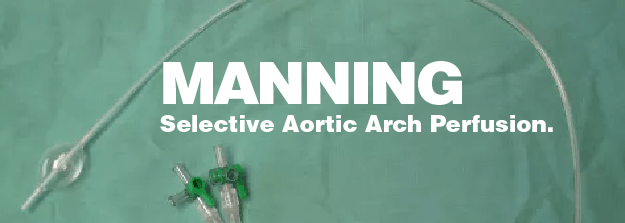Selective Aortic Arch Perfusion –
Summary by: Jim Manning
Selective Aortic Arch Perfusion (SAAP) is an endovascular-extracorporeal perfusion resuscitation technique designed specifically to treat cardiac arrest. SAAP involves the blind insertion of a large-lumen balloon occlusion catheter into the descending thoracic aortic arch via a femoral artery. With the SAAP catheter balloon inflated in the thoracic aorta, the heart and brain are relatively isolated for resuscitative perfusion through the SAAP catheter lumen with an oxygen-carrying fluid (such as blood, hemoglobin-based oxygen carrier or fluorocarbon emulsion). SAAP promotes restoration of spontaneous circulation (ROSC) by the heart while protecting the brain from further ischemic insult. SAAP can be used to treat both hemorrhage-induced traumatic cardiac arrest and medical, non-traumatic cardiac arrest.
In traumatic cardiac arrest, SAAP provides the combination of (1) thoracic aortic balloon occlusion for control of hemorrhage below the diaphragm, (2) rapid volume replacement in hemorrhage-induced hypovolemia to restore normovolemia and (3) perfusion of the heart and brain in an effort to achieve ROSC. SAAP also allows titration of small doses of intra-aortic adrenaline or other medications to achieve ROSC.
In medical cardiac arrest, SAAP catheter balloon occlusion of the thoracic aorta limits the distribution of oxygenated perfusate toward the heart and brain. Since medical cardiac arrest patients are not typically hypovolemic, SAAP with an exogenous oxygen-carrier is a volume loading intervention that can only be used for a short time period (5-10 min). If ROSC is not achieved with the limited volume of exogenous oxygen-carrier, femoral venous access during initial SAAP infusion allows venous blood withdrawal for continued SAAP support to promote ROSC without further volume loading (autologous blood SAAP or, essentially, aortic arch ECMO). Intra-aortic adrenaline and anti-reperfusion agents can also be used. Even if ROSC is not rapidly achieved, SAAP serves as a bridge that limits hypoperfusion until cannulation for full body ECMO can be achieved.

























